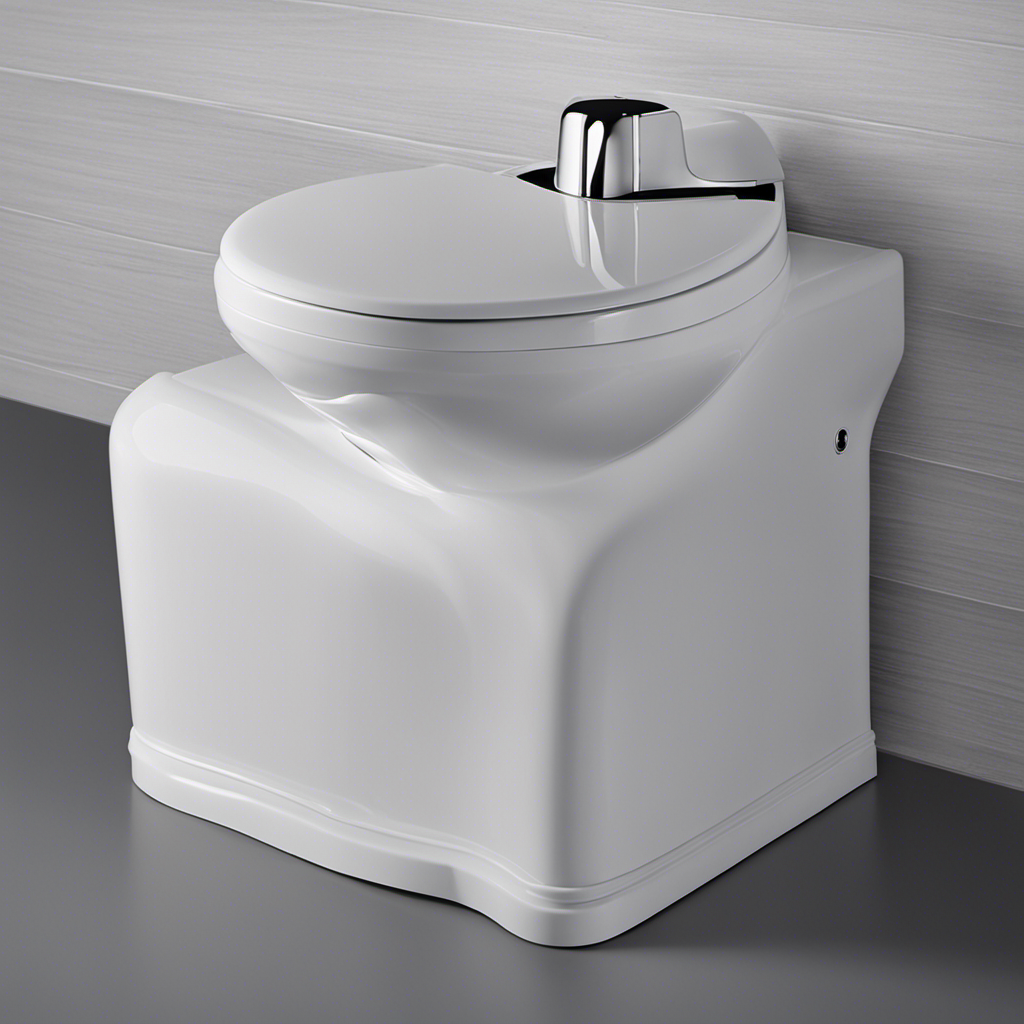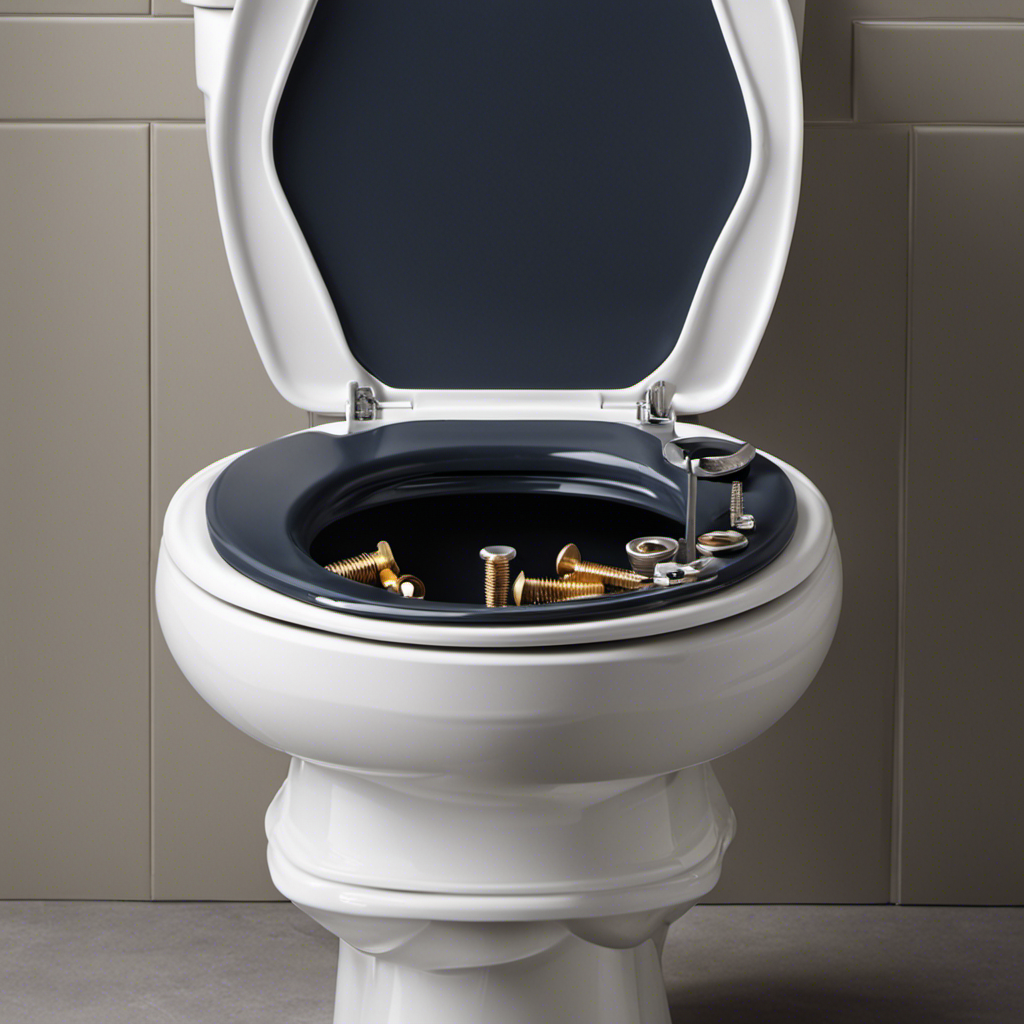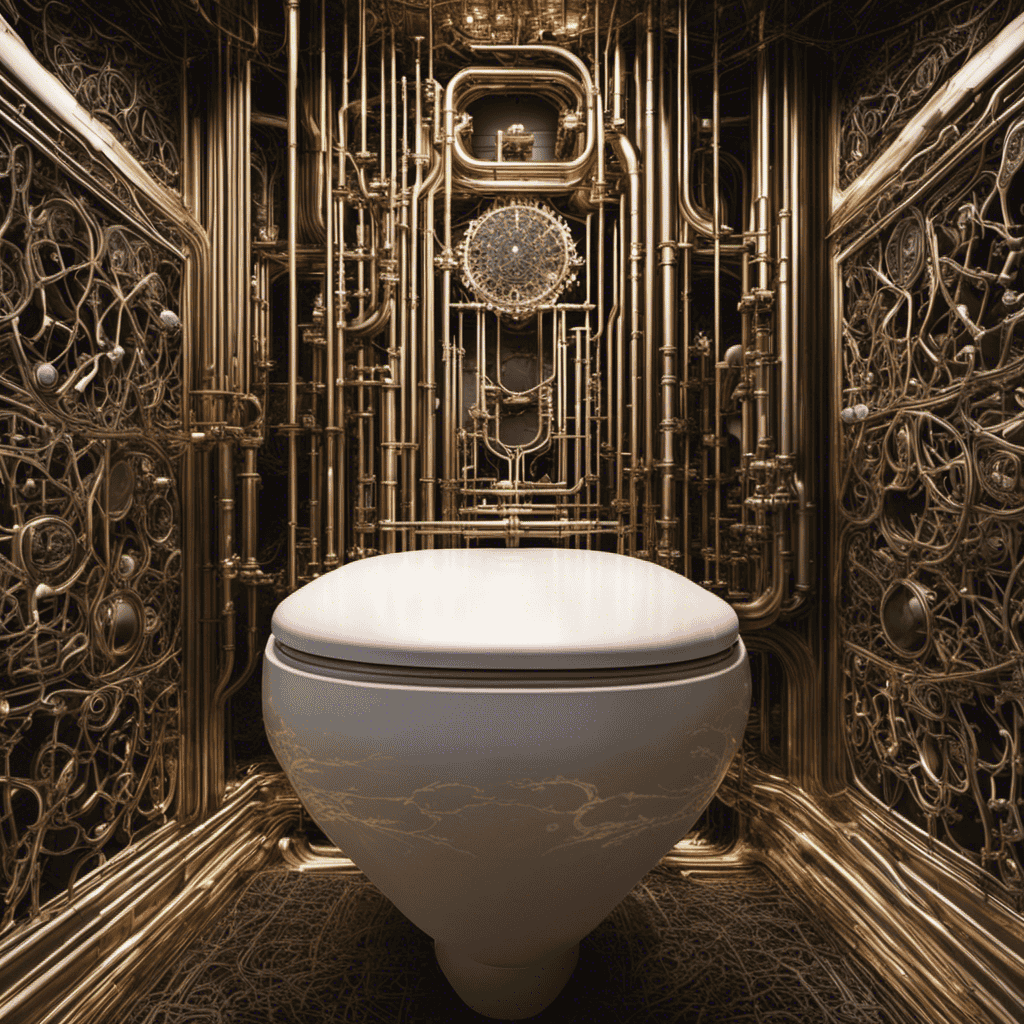Have you ever experienced the frustration of a toilet that just won’t stop running? It’s like trying to harness a wild river – an endless cycle that wastes water and drives up your utility bill.
But fear not, for there is a solution! In this article, I will guide you step-by-step through the process of stopping toilet water from running. We’ll explore the inner workings of your toilet, identify common causes, and provide practical tips to fix the issue.
So let’s dive in and put an end to that relentless flow!
Key Takeaways
- The fill valve regulates the water level in the toilet tank.
- A faulty flapper valve can cause continuous water flow.
- Adjusting the float and fill valve controls the water level in the toilet tank.
- Mineral buildup in the water pressure regulator can cause running toilets.
Understanding the Anatomy of a Toilet
To understand why your toilet water keeps running, you’ll need to know the anatomy of a toilet. Let me break it down for you.
Inside the tank, there are a few key components that control the water flow. First, there is the fill valve, which regulates the water level in the tank. Next, we have the flush valve, responsible for releasing water into the toilet bowl during a flush. Lastly, there is the flapper, a rubber seal that covers the flush valve.
When you flush, the flapper lifts, allowing water to flow into the bowl. After the flush, the flapper should close tightly to stop the water flow. If your toilet water keeps running, it could be due to a faulty flapper or an issue with the toilet water pressure.
Regular toilet bowl cleaning can help prevent any blockages that could affect water flow.
Identifying Common Causes of Toilet Water Running
One common cause of toilet water continuously flowing is a faulty flapper valve. When the flapper valve doesn’t seal properly, it allows water to continually flow from the toilet tank into the bowl. To fix this issue, follow these steps:
-
Turn off the toilet water supply. Locate the shut-off valve behind the toilet and turn it clockwise until it stops.
-
Remove the toilet tank lid and inspect the flapper valve. Look for any signs of damage or wear.
-
If the flapper valve is damaged, disconnect it from the flush valve assembly. This can usually be done by unhooking the chain or removing the mounting brackets.
-
Replace the faulty flapper valve with a new one. Make sure to choose a compatible replacement that matches the size and shape of the old flapper.
-
Reconnect the new flapper valve to the flush valve assembly and ensure it is properly seated.
-
Turn on the toilet water supply by turning the shut-off valve counterclockwise.
Steps to Adjust the Toilet Float and Fill Valve
By adjusting the toilet float and fill valve, you can control the amount of water that fills the toilet tank. This is important because if the water level is too high, it can cause the toilet to constantly run, wasting water and increasing your water bill. On the other hand, if the water level is too low, it may not flush properly. To adjust the water level, you can follow these simple steps:
- Turn off the water supply to the toilet by shutting off the valve located behind the toilet.
- Remove the toilet tank lid and locate the fill valve, which is connected to the float.
- Adjust the float by either bending the rod or moving the adjustment screw to lower or raise the water level.
If adjusting the float does not solve the issue, you may need to replace the fill valve. Here is a table to help you understand the process:
| Step | Action |
|---|---|
| 1 | Turn off the water supply to the toilet. |
| 2 | Remove the toilet tank lid. |
| 3 | Locate the fill valve connected to the float. |
| 4 | Disconnect the water supply line from the fill valve. |
| 5 | Remove the old fill valve. |
| 6 | Install the new fill valve. |
| 7 | Reconnect the water supply line. |
| 8 | Turn on the water supply and test the water level. |
Fixing a Leaky Flapper or Flush Valve
Adjusting the flapper or flush valve will help you fix a leak in your toilet.
To begin, turn off the water supply to the toilet by shutting the valve behind it.
Next, flush the toilet to empty the tank and remove any remaining water.
Locate the flapper or flush valve at the bottom of the tank. Inspect it for any signs of damage or wear, such as cracks or warping.
If you notice any issues, it’s time to replace the damaged gaskets. Simply remove the old flapper or flush valve and install the new one according to the manufacturer’s instructions.
Once replaced, turn on the water supply and check for any leaks.
If the leak persists, it may be due to high water pressure, so consider checking the water pressure regulator.
Troubleshooting persistent running toilet issues will be discussed in the following section.
Troubleshooting Persistent Running Toilet Issues
If you’re experiencing a persistent leak, it might be helpful to check the water pressure regulator. Troubleshooting water pressure issues can help identify the root cause of the problem.
One common issue that can lead to a running toilet is mineral buildup in the water pressure regulator. Here’s a step-by-step guide on how to check for mineral buildup.
First, locate the water pressure regulator, which is usually located near the main water supply valve. Next, turn off the main water supply valve and relieve any remaining pressure in the system.
Then, remove the water pressure regulator and inspect it for any signs of mineral buildup. If you notice any deposits, clean the regulator using a vinegar solution or a descaling agent.
Conclusion
And there you have it, folks! By following these simple steps, you can easily put an end to the frustrating problem of a running toilet.
Understanding the inner workings of your toilet and identifying common issues are the first steps to fixing the problem.
From adjusting the float and fill valve to fixing a leaky flapper or flush valve, you can tackle any issue that comes your way.
So go on, take charge, and bid farewell to the never-ending sound of running water in your bathroom.
Trust me, your ears will thank you!










